Organizational Change: Leadership and Management Strategies Essay
VerifiedAdded on 2020/05/11
|5
|1201
|89
Essay
AI Summary
This essay delves into the complexities of managing organizational change, emphasizing the interplay between leadership, employee resistance, and the implementation of effective strategies. It begins by highlighting the psychological and emotional efforts required from employees during organizational shifts, referencing Lewin's argument on resistance and the need to address survival anxiety. The essay explores the concept of the 'principle of economic effort' and its impact on employee perception, suggesting that organizations must demonstrate the benefits of change to limit resistance and foster psychological safety. It then examines the models of change, including Lewin's unfreezing-change-refreezing model and Schein's model, underscoring the role of external forces and the importance of the learning narrative in facilitating change acceptance. The essay concludes by stressing the importance of involving employees and preparing them for transitions, especially in dynamic environments. It emphasizes that organizations can successfully navigate change by adopting strategies informed by Lewin's and Schein's models, developing principles that guide change, and fostering a positive transition experience for employees.
1 out of 5
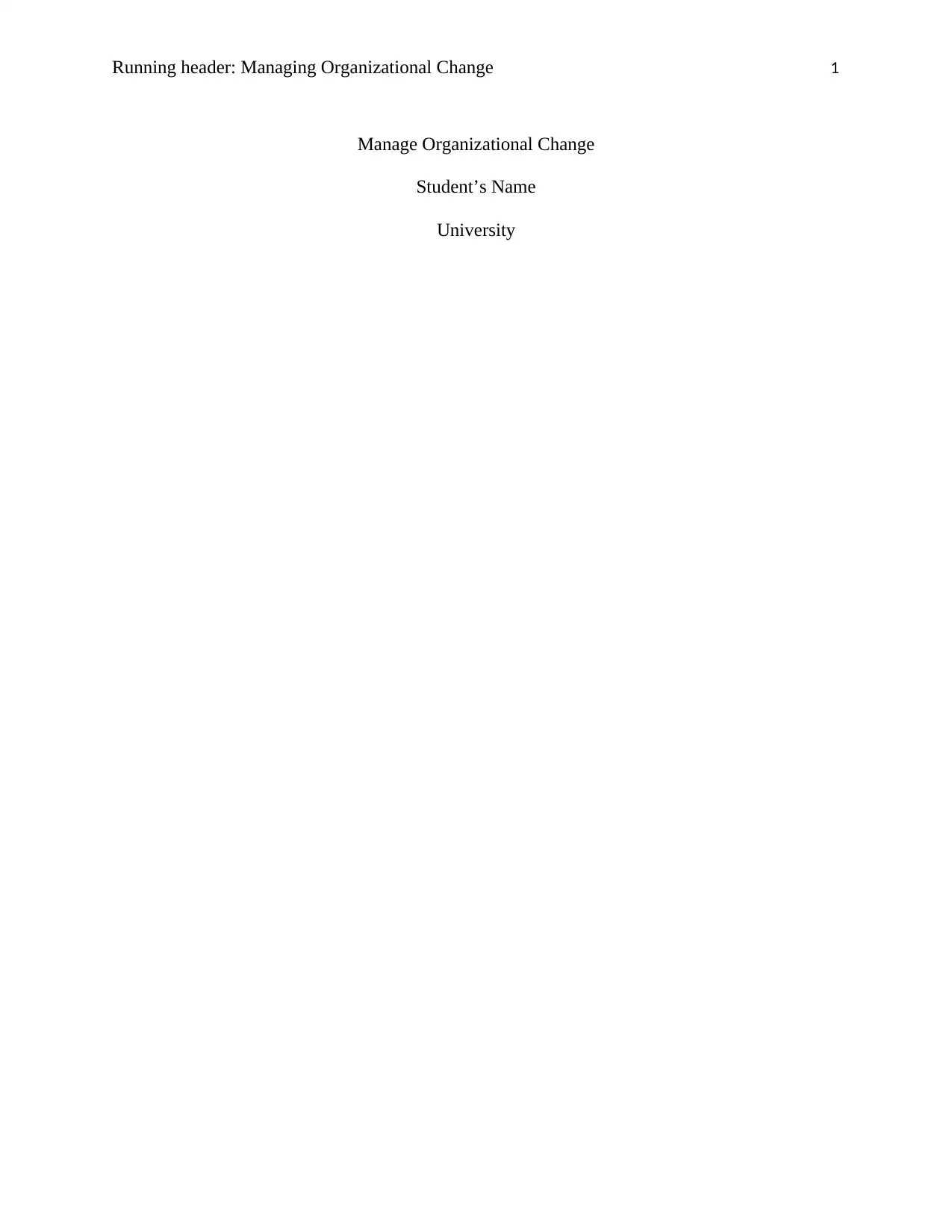
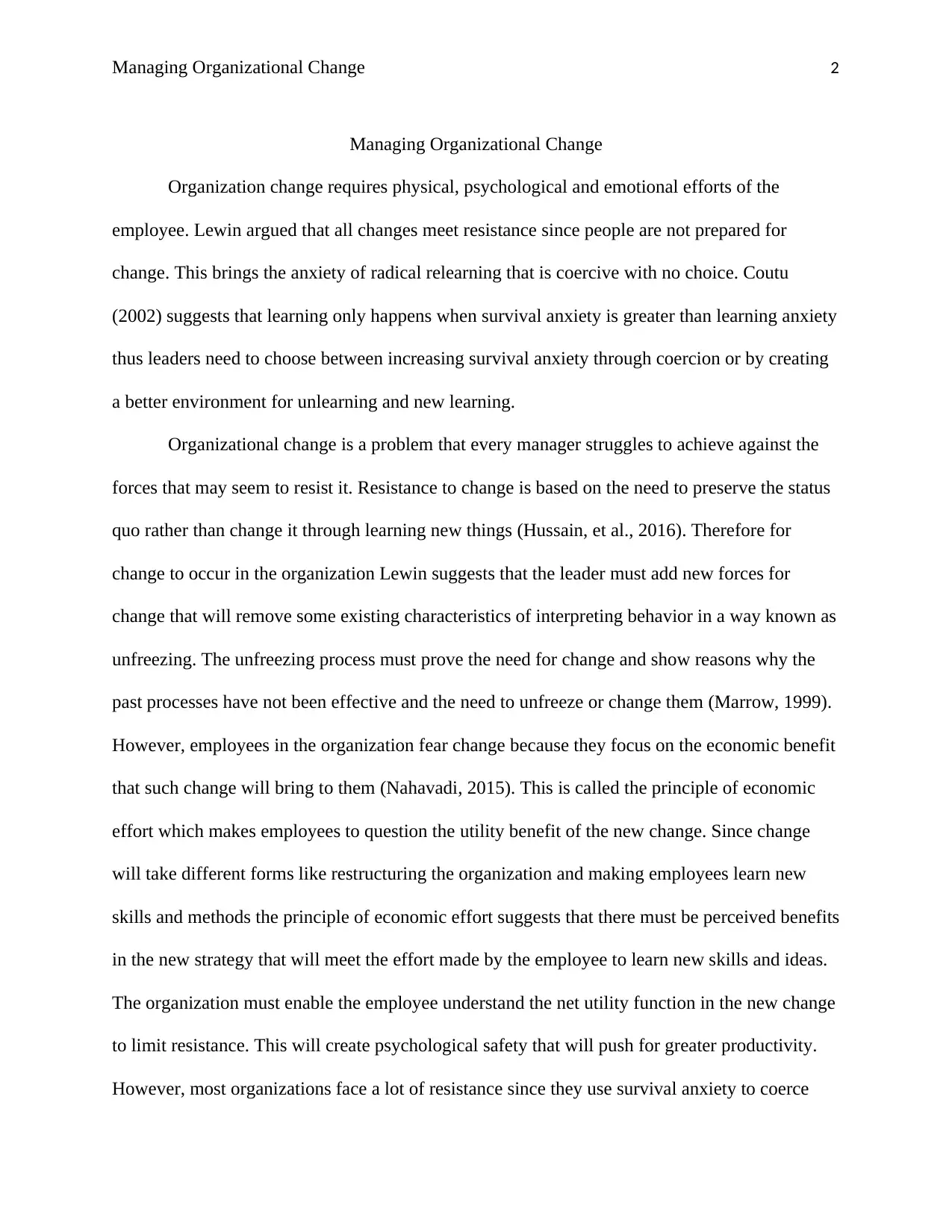
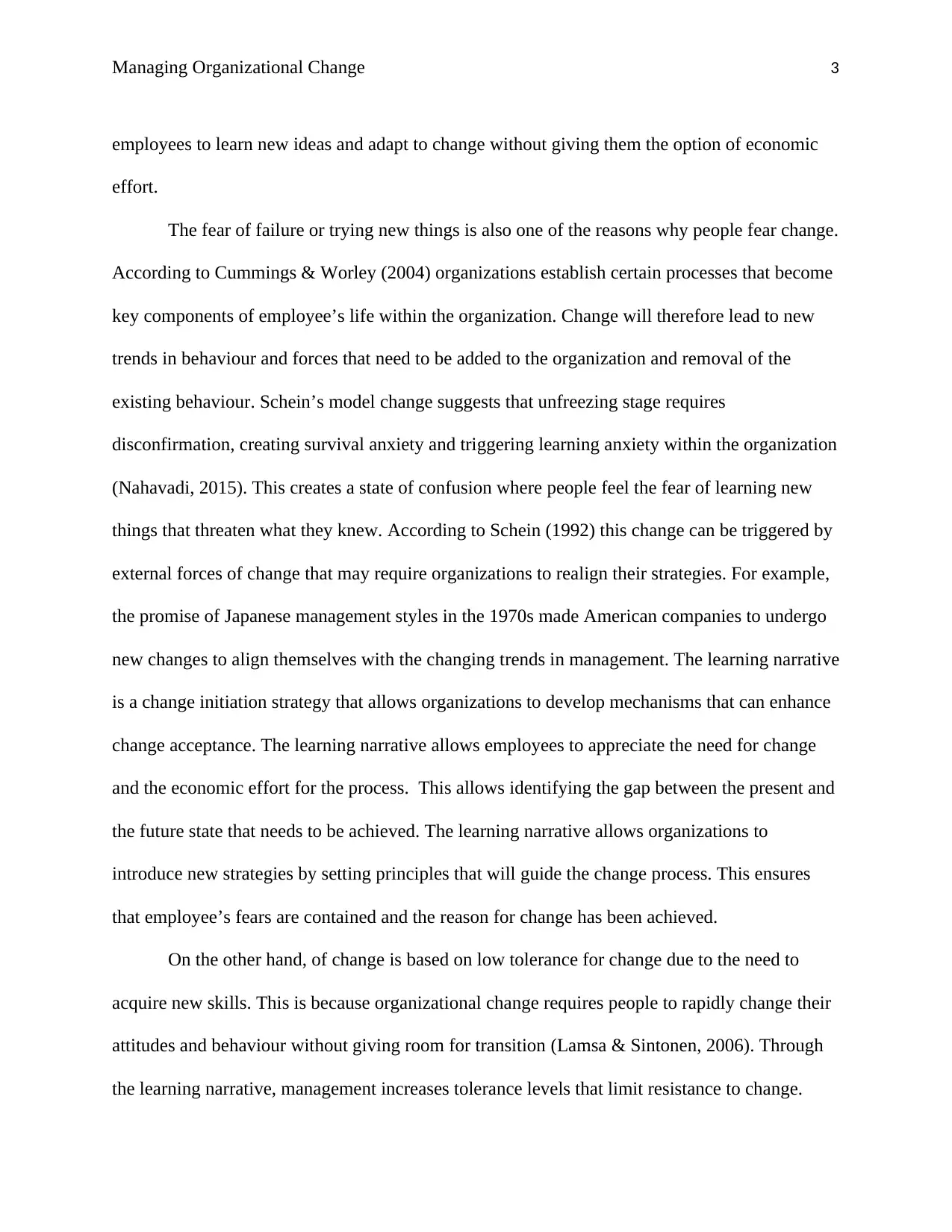

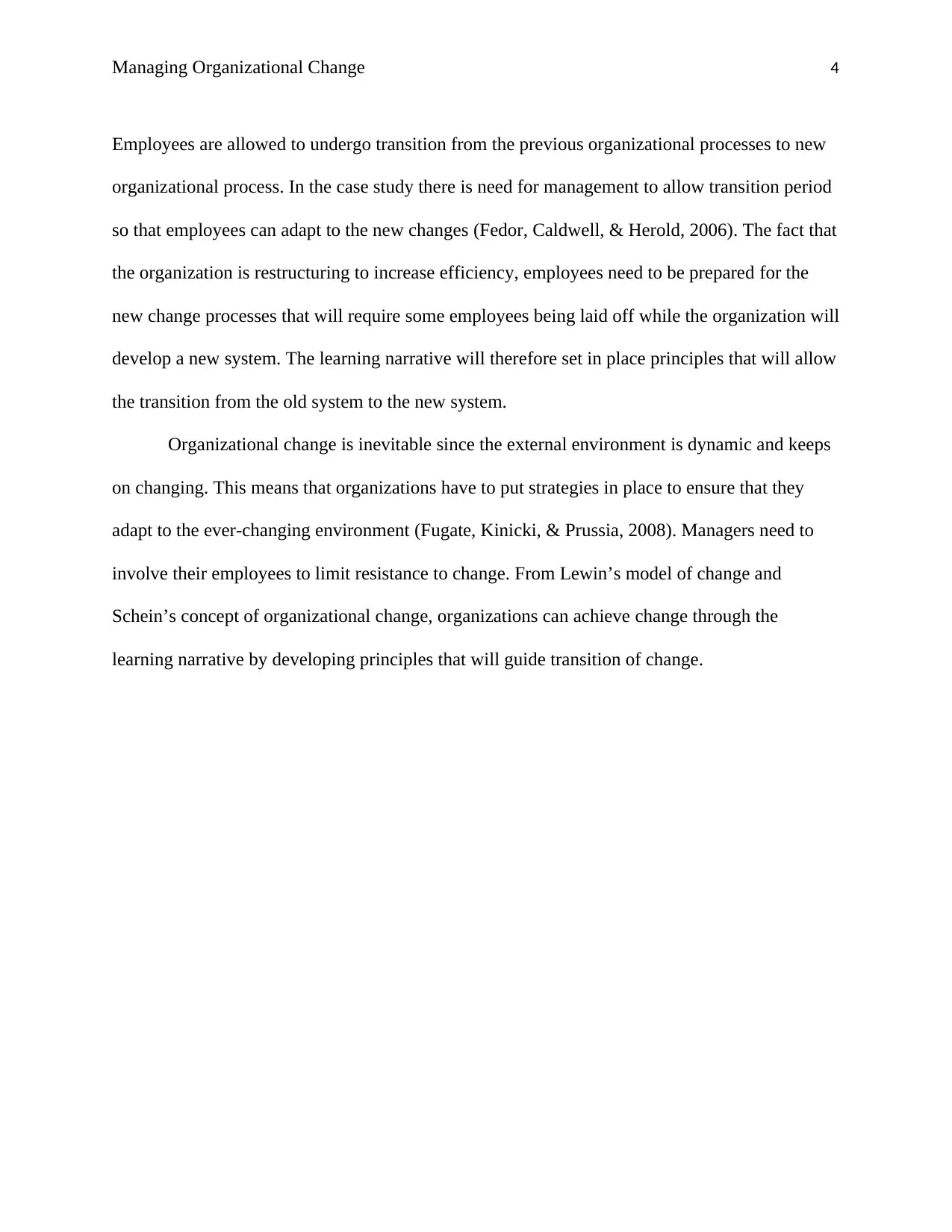
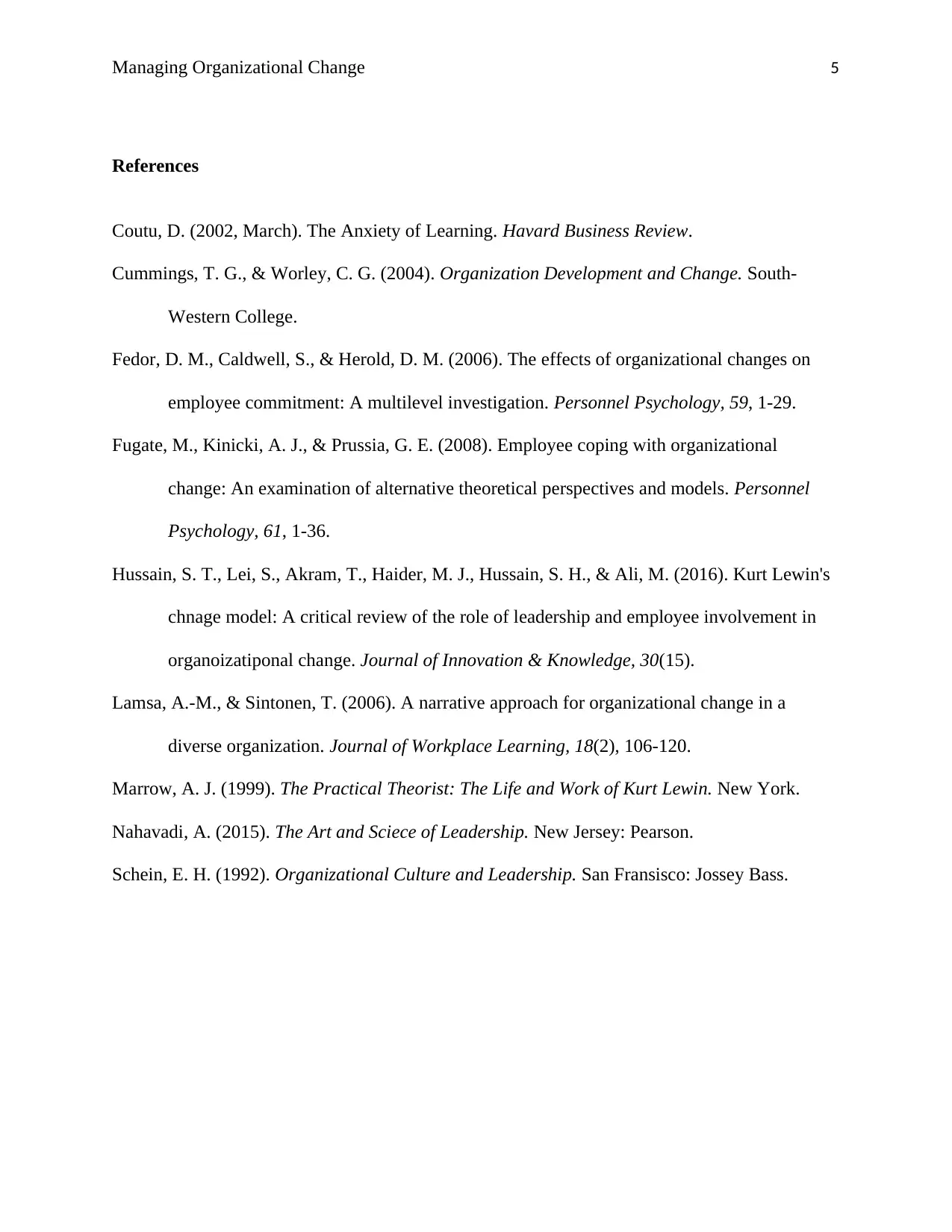






![[object Object]](/_next/static/media/star-bottom.7253800d.svg)